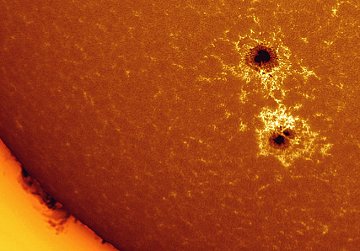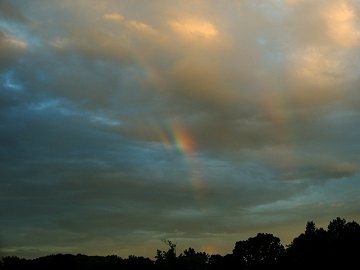 Did you miss the aurora surprise of August 7th? Next time get a wake-up call: Spaceweather PHONE.
Did you miss the aurora surprise of August 7th? Next time get a wake-up call: Spaceweather PHONE.
MORNING PLANETS: Waking up at dawn is hard to do. It helps when a bunch of planets holler "good morning." Venus, Mercury, Saturn and the crescent Moon are converging for a pretty sunrise display on August 20 through 22. Set your alarm and take a look!
SUNSPOT 904: Bipolar sunspot 904 hasn't actually erupted, not in a big way, but it is crackling with promise. "The two giant spots look like whirlpools of gasoline," says photographer Larry Alvarez of Flower Mound, Texas. He took this picture on August 13th:

Sunspot 904, the view through a Coronado MaxScope90.
And what does a "crackle" look like? Gary Palmer caught one in a sequence of images he calls "Birth of a Filament." Note the dark and ragged cloud, in flight, propelled outward by some minor explosion in the heart of the spot. The big explosions are yet to come.
more images: from Pete Lawrence of Selsey, UK; from Harald Paleske of Langendorf, Germany; from P-M Hedén of Vallentuna, Sweden; from Dennis Simmons of Brisbane, Australia;
RAINBOW MYSTERY: July 29th was a long, rainy day in Statesville, North Carolina. When the evening clouds finally parted, photographer Charles Tilley saw something wonderous: "The southern sky was filled with multiple rainbows. A complete arc was never seen, but parts of five different rainbows appeared at the same time."

What could cause such a strange, fragmented rainbow? Answering that question became a "nice little exercise in atmospheric optics detective work" for rainbow-expert Les Cowley.
In short, it took several localized showers drizzling extra-tiny raindrops to produce the display. The full solution is a lengthy, but interesting read for serious rainbow-philes. Says Cowley, "You will not see something like that again for a very long time!"

